Echinoderms
1/61
There's no tags or description
Looks like no tags are added yet.
Name | Mastery | Learn | Test | Matching | Spaced |
|---|
No study sessions yet.
62 Terms
What are the 4 things echinoderms are characterized by in addition to having spiny skin?
Internal skeleton
5 part radial symmetry
Water vascular system
Tube feet

What are tube feet?
Suction-cuplike structures
What is the internal skeleton also called an what is it made up of?
hardened plates of calcium carbonate
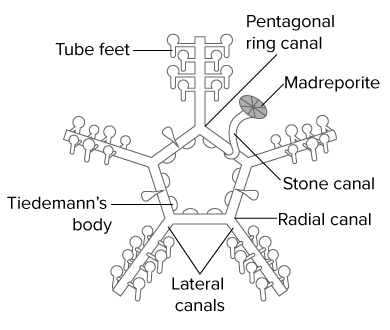
What does the water vascular system consist of?
an internal network of fluid filled canals connected to tube feet
What essentia life functions of echinoderms is the water vascular system involved in?
Feeding
Respiration
Internal transport
Excreting metabolic wastes
movement
(EVERYTHING EXCEPT RESPONSE AND REPRODUCTION)
What are some things that echinoderms share in common with the phylum Chordata?
Certain stages in the development of echinoderm larvae are similar to some members of Chordata
They posses an endoskeleton, as do vertebrates
Why do biologists that echinoderms are the closest relatives to humans amongst all invertebrates?
Because echinoderms share several characteristics with Chordates
Explain the body plan of an adult echinoderm.
5 parts organized symmetrically around a center
Do echinoderms have an anterior/posterior end? Why/Why not?
They do not have either because of their body plant - 5 part body that exhibits radial symmetry.
Do echinoderms have a brain?
No
What are the two sides of an echinoderm called?
Oral surface
Aboral surface
What is the oral surface on the echinoderm?
The side where the mouth is located.
What is the aboral surface of an echinoderm?
The side opposite the oral surface.
How does the water vascular system open to the outside in an echinoderm?
Through a sieve-like structure called the madreporite.
Madreporite
Responsible for filtering water in the water vascular system. Where water enters in
Where does the madreporite connect to in a starfish?
a tube called the ring canal which forms a circle around the animal’’s digestive system.
What extends from the ring canal?
5 radial canals extend into each body segment.
What is attatched to each radial canal?
many moveable tube feet.
What does the entire water vascular system operate as?
A living hydraulic pump which can propel water in or out of tube feet.
Explain the steps in how tube feet act like suction cups.
Water is pulled into tube feet by water vascular system, causing the tube foot to expand.
Water is pulled out of the tube foot, causing it to shrink.
This create a partial vacuum that holds onto whatever the foot was touching (suction force).
How many tube feet are needed for this suction force to even happen?
A LOT
Summarize the steps in how carnivorous species of echinoderms use their tube feet to feed.
Opens prey
Pours out enzymes
Puts stomach back in mouth
Explain the 1st step in how carnivorous echinoderms (starfish) feed.
Opens prey
Bivalve mollusks shells are opened using tube feet.
Explain the 2nd step in how carnivorous echinoderms (starfish) feed.
Pours out enzymes
Starfish flips its stomach out of its mouth
Pours out enzymes into the bivalve
Prey is digested using these enzymes in its own shell
Explain the 3rd step in how carnivorous echinoderms (starfish) feed.
Stomach moves back into mouth
Only an empty shell is left behind
What else do starfish eat other than bivalves?
Snails
Corals
Other echinoderms
How do herbivorous echiniderms such as sea urchins) feed?
They scrape algae from rocks using thir 5 part jaw

How do filter feeding echinoderms (such as sea lillies, basket stars, brittle stars) feed ?
They use tube feet to capture plankton that float by on ocean currents.
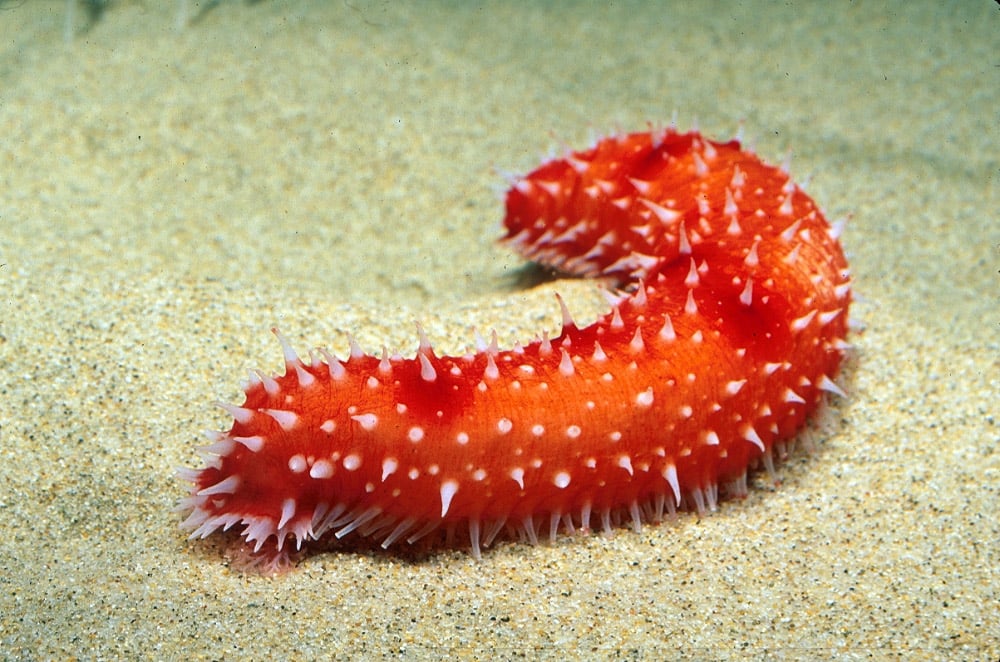
How do detritus feeding echinoderms feed? How do they digest food?
They move like a bulldozer across the ocean floor, taking in detritus
Similar to an earthworm, they digest organic material and exrete rest solidly through anus
Describe the 2 ways in which echniderms can respire.
Thin walled tissue of the tube feet acts as a respiratory structure
Small outgrowths known as skin gills can function as gas exchange
Do echinoderms have a system of internal transport? If not, what replaces this?
No.
Because respiration and excretion occur through skin of tube feet and gill structures, so one is not needed
How are nutrients distributed in echinoderms?
By digestive glands and fluids within the body cavity.
How are solid wastes excreted in echinoderms? Are there any excpetions?
Through the anus, in the form of feces
Yes, brittle stars lack an anus, and therefore excrete using the mouth
In what form is metabolic wastes excreted in echinoderms?
Ammonia
How are metabolic wastes excreted in echinoderms?
The same places where gas exchange takes place - skin gills and tube feet.
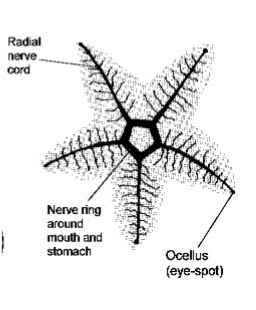
What makes up the “nervous system” of an echinoderm?
A nerve ring which surrounds the mouth
Radial nerves that connect the ring with the body sections
What is a characteristic in the nervous system of most echinoderms that helps them detect food?
Scattered sensory cells which are sensitive to the cheimcals released by food sources
How many eyespots can starfish have and where are they located?
Up to 200, located on the tips of their arms.
What is special about echinoderm eyespots?
They do a little more than detect light
What sense organs do echinoderms posses?
Statocysts
eyespots
Why do spiny covered echinoderms need to hide in crevices?
They are very slow moving, allowing predators to easily flip them over and attack their vulnerable undersides.
When do many echinoderms feed due to predators?
at night, making them nocturnal animals.
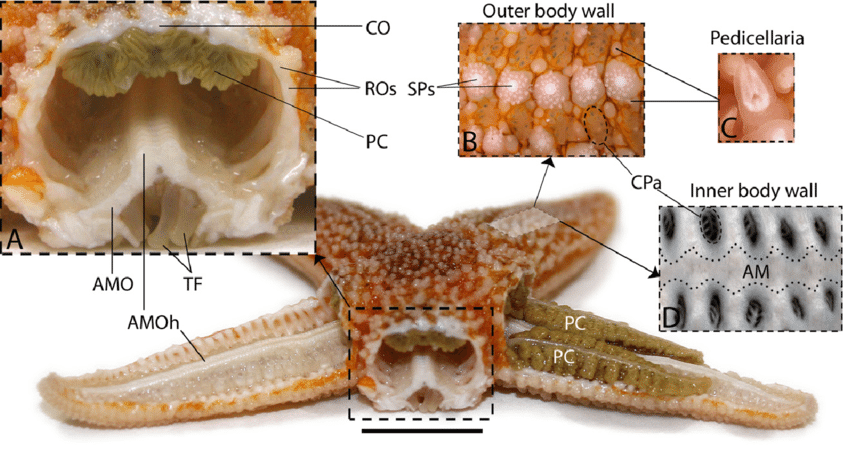
How do most echinoderms move?
Using their tube feet + thin layers of muscle fibers attatched to the plates of their endoskeleton
What is an echinoderms mobility sort of determenied by?
The structure of its endoskeleton.
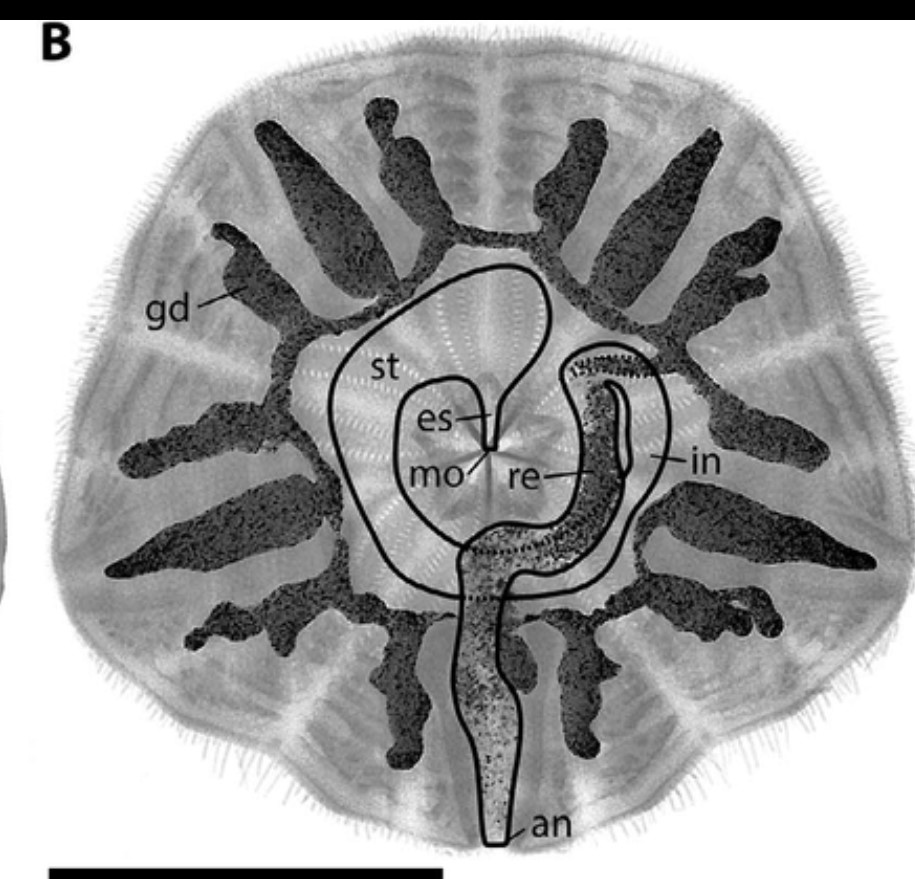
Describe the endoskeleton of sand dollars and sea urchins.
Plates have been fused together to form a rigid box which encloses the animals internal organs, which have moveable spines on them
How do sea dollars and sea urchins use their structures to move?
They use tube feet and moveable spines attatched to their endoskeleton
this helps them creep from one place to another or to burrow in the sand.
Dsecribe the endoskeleton of starfish etc.
Skeletal plates move around a series of flexible joints, which allow echinoderms to use their arms for locomotion
How do feather stars move?
By flapping their arms like wings, works only for short distances
How do starfish and brittle stars move
crawling
Dsecribe the endoskeleton of sea cucumbers
Plates are reduced to tiny vestiges inside a soft, muscular, body wall
What does the endoskeleton (loss of plates) in sea cucumbers allow for?
a flexible body
How do some species of sea cucumbers move?
by crawling along the ocean through contracting the muscles of the body wall.
What can echinoderms be in terms of biological sex?
Male
Female
Hermaphroditic
Where are gametes produced respectively in starfish?
Testes and/or ovaries
Where do gametes fill after being produced? When?
in the arms during reproductive season
Summarize the steps of echinoderm reproduction.
Release
Respond
Fertilization
Maturity
Explain the first step in echinoderm reproduction
Release
Sperm and eggs are shedded into the water
Explain the 2nd step in echinoderm reproduction.
Respond
Individual starfishes will detect their own species gametes in the water
They will release gametes in response to this
Explain the third step in echinoderm reproduction.
Fertilization
Open water
Swim around for some time as members of the huge plankton community which swarms the ocean
Explain the fourth step in echinoderm reproduction.
Maturity
Larvae exhibit bilateral symmetry swim to ocean bottom
Mature an metamorphose into adults which exhibit radial symmetry.
What is an incredible ability that many starfish species have?
Regeneration:
Ability to grow back their arms
What is a requirment for a limb of a starfish to be able to regenerate?
It must contain a portion of the central part of the body